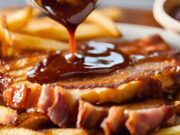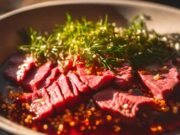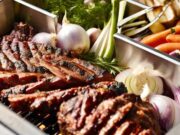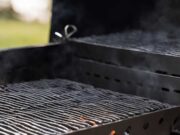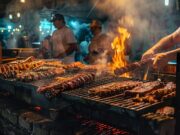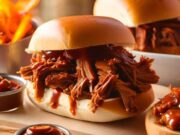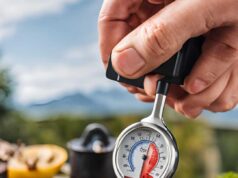- Key Takeaways:
- How to Manage Grill Temperature: A Comprehensive Guide for Beginners
- Understanding Grill Temperature
- Types of Grills and Their Temperature Management
- How to Control Temperature on a Charcoal Grill
- Methods for Temperature Control
- Tips for Successful Temperature Management
- Common Mistakes to Avoid
- Frequently Asked Questions
Grilling is an art that fundamentally relies on mastering one key element: temperature control.
For those new to grilling and eager to achieve perfectly cooked meats and vegetables, understanding how to manage grill temperature can significantly impact the outcome.
This guide provides essential information on grill temperature management, including the unique characteristics of various grill types and practical techniques for maintaining the ideal heat.
With valuable tips, common pitfalls to avoid, and expert advice, you will be well-prepared to enhance your grilling skills.
Key Takeaways:
- Proper temperature management is crucial for achieving perfect grilling results.
- Different types of grills require unique methods to control temperature.
- Utilizing direct and indirect heat cooking methods, adjusting dampers, and using thermometers are key techniques for successful temperature management.
How to Manage Grill Temperature: A Comprehensive Guide for Beginners
Managing grill temperature is a critical aspect of becoming a successful grill master, especially for those who are beginners looking to elevate their BBQ skills.
Understanding the different cooking methods and the significance of accurate temperature control can greatly enhance both the flavor and safety of grilled meats, including steak, chicken, pork, and seafood.
By utilizing tools such as a quality thermometer or grill lid, you can learn how to adjust heat effectively, whether you are using a charcoal grill or a gas grill.
The journey to perfecting your grilling techniques begins with mastering the intricacies of grill temperature management.
Understanding Grill Temperature
Understanding grill temperature is essential for anyone aiming to enhance their grilling skills, as it directly impacts the cooking process for various types of meat, including steak, chicken, and pork.
Types of Grills and Their Temperature Management
Different types of grills, such as charcoal, gas, and electric, provide distinct methods for temperature management. Each type presents specific advantages and challenges that you should consider in the art of grilling.
Understanding these differences can enhance your grilling experience and help you achieve the desired results.
How to Control Temperature on a Charcoal Grill
Controlling the temperature on a charcoal grill necessitates a strategic approach that involves adjusting damper settings and managing fuel effectively. These practices are crucial for reaching the desired cooking temperature and ensuring optimal BBQ results.
Damper Settings
Adjusting the damper settings on a charcoal grill is an essential technique for controlling airflow, which directly affects the temperature and cooking results of your barbecue.
By fine-tuning the dampers, you can create the optimal cooking environment for various types of meat, from slow-cooked ribs to quick-searing steaks. For instance, when grilling chicken or pork chops, a moderate damper setting allows for even cooking without excessive flare-ups, keeping the meat juicy.
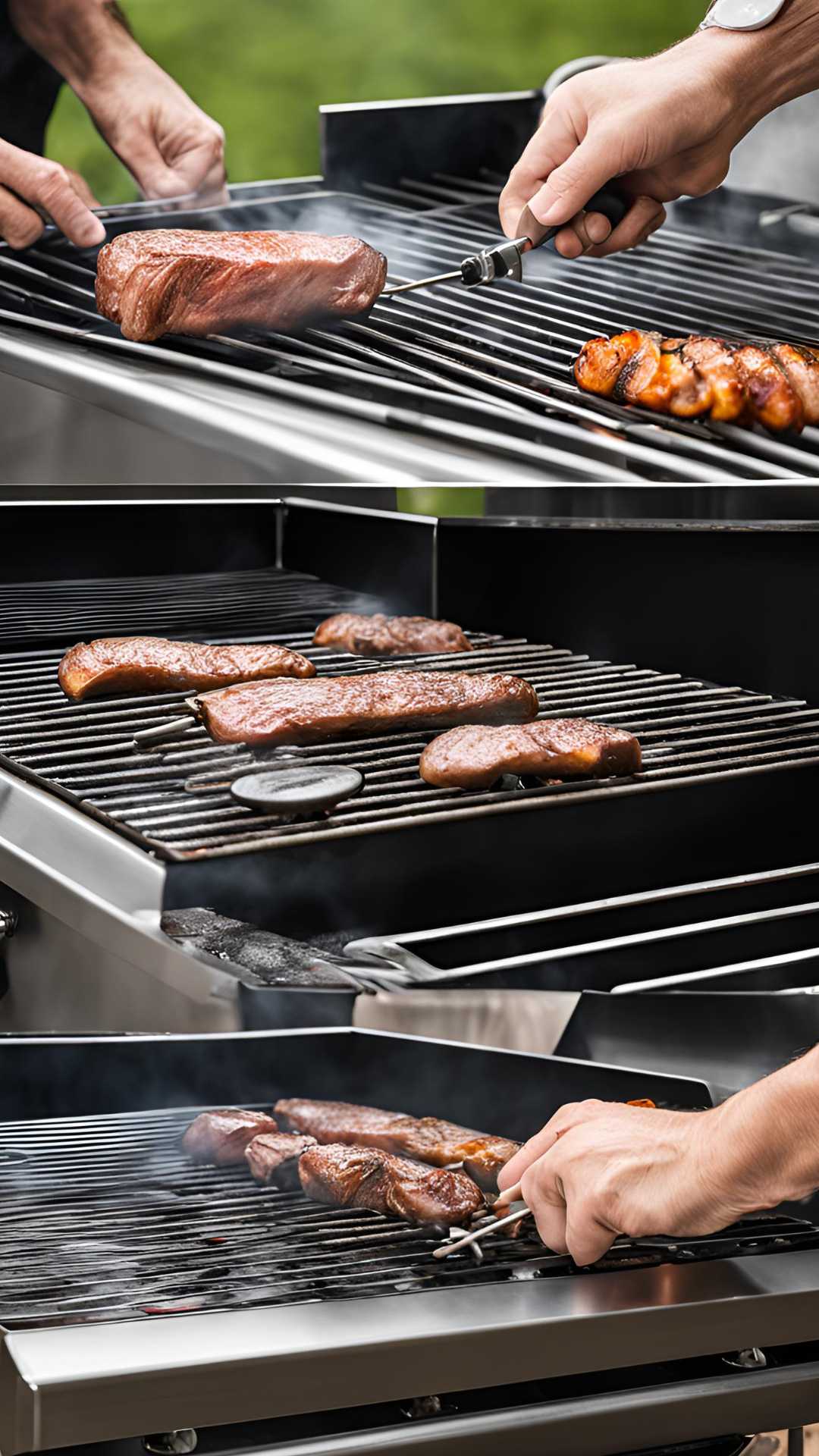
On the other hand, when grilling thicker cuts, such as brisket or whole chickens, reducing airflow by partially closing the dampers helps maintain a lower temperature, ensuring that the meat cooks thoroughly over a longer period. It’s crucial to monitor the temperature closely, as adjusting the dampers can be the difference between achieving that perfect crust and overcooking the interior.
Fuel Management
Effective fuel management is crucial when utilizing a charcoal grill, as the type of charcoal and its arrangement can significantly influence the consistency of heat during grilling.
Choosing the appropriate type of charcoal is essential for achieving your desired cooking results. For example, lump charcoal ignites quickly and provides higher heat, while briquettes offer a longer, steadier burn, making them ideal for low and slow cooking. To maximize heat retention, consider arranging the charcoal in a pyramid shape, as this allows for improved airflow and more even heating.
Regularly checking and maintaining fuel levels throughout the cooking process not only ensures a consistent temperature but also impacts the flavors of the foods being grilled. For instance, adjusting the charcoal during grilling enables you to manage the heat effectively, allowing for perfect searing of steaks or the gradual cooking of delicate vegetables.
Methods for Temperature Control
Utilizing various methods for temperature control can greatly enhance your grilling experience, enabling you to achieve optimal results whether you are employing direct grilling or indirect heat techniques.
Direct vs. Indirect Heat
The choice between direct grilling and indirect heat is crucial for various cooking methods and significantly impacts the flavor and tenderness of your grilled meat. Understanding when to apply each technique can greatly enhance your culinary results.
Direct grilling exposes meat to high heat, making it ideal for thinner cuts like chicken breasts, burgers, or vegetables. This method allows for a quick sear that locks in juices and creates appealing grill marks. Conversely, indirect heat is suitable for larger cuts, such as ribs or whole chickens, which require longer cooking times. This technique enables the meat to cook evenly and become tender without burning the exterior.
By recognizing the characteristics of each method, you can effectively tailor your grilling approach to achieve succulent and flavorful dishes.
Use of Thermometers
Using thermometers is essential for accurately monitoring grill temperature, which helps ensure that meat is cooked safely and reaches the desired level of doneness.
The variety of thermometers available for grilling can significantly enhance your cooking experience, making it easier to achieve perfectly grilled steaks, chicken, and other meats. For example, instant-read thermometers provide a quick temperature reading, enabling timely assessments without sacrificing valuable heat from the grill. On the other hand, probe thermometers can remain in the meat while it cooks, offering continuous temperature feedback.
To effectively utilize these tools, it is crucial to understand the recommended internal temperatures for different meats. For instance, poultry should reach an internal temperature of 165°F, while pork should be cooked to 145°F. This knowledge ensures a delicious and safe meal every time.
Tips for Successful Temperature Management
Effective temperature management is crucial for any grilling enthusiast, and utilizing expert cooking tips can help you achieve perfect results each time you start your BBQ.
Common Mistakes to Avoid
Identifying common mistakes in temperature management can significantly improve your grilling experience, helping you avoid issues that may compromise food safety and the quality of your cooking results.
Frequently Asked Questions
How can I control the grill temperature using the hand test?
The hand test involves holding your hand about 4 inches above the grill and counting the seconds it takes for you to feel the heat. For low heat, you should be able to hold your hand for 7 seconds, for medium heat, 5 seconds, and for high heat, 3 seconds.
Why is it important to preheat the grill before cooking?
Preheating the grill ensures that it reaches the desired temperature and also helps to kill any bacteria on the surface. This creates a safe cooking environment and allows for even cooking of your food.
What is the best way to control the grill temperature for indirect cooking?
For indirect cooking, it is best to arrange the coals on one side of the grill and place your food on the opposite side. This allows for indirect heat to cook the food slowly and evenly. You can also adjust the vents to control the airflow and temperature of the grill.
Can I use a grill thermometer to monitor the temperature?
Yes, a grill thermometer is a great tool for monitoring the temperature of your grill. You can place it on the cooking grate or in the lid vent to get an accurate reading of the temperature inside the grill.
What should I do if the grill temperature is too high?
If the grill temperature is too high, you can try closing the vents partially to reduce the oxygen supply and lower the temperature. You can also remove some of the coals if using a charcoal grill. If using a gas grill, lower the heat setting or turn off a burner to reduce the temperature.
What can I do if the grill temperature is too low?
If the grill temperature is too low, you can try opening the vents fully to increase the airflow and raise the temperature. For a charcoal grill, you can add more coals. For a gas grill, increase the heat setting or turn on an additional burner.








